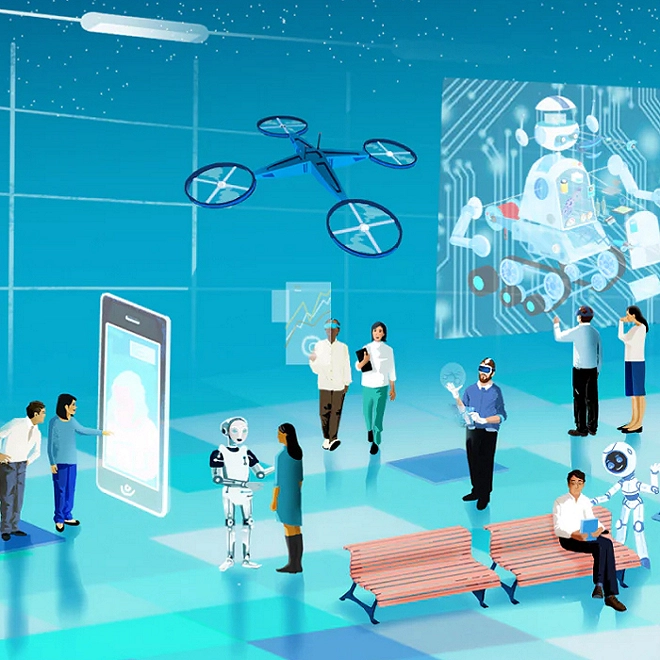Navigating the Future of Government: A Deloitte and Workday Blog
How to Determine the Amount of Transformation to Bite Off as a Part of Your Government Workday Cloud Implementation
When considering a cloud ERP implementation, the possibilities for streamlining processes, consolidating disparate legacy data, introducing automation, and enhancing reporting and insights are almost endless. However, the exciting prospect of modernizing both systems and operations need to be balanced with determining the optimal amount of transformation to achieve during an implementation.
Before embarking on a Workday cloud implementation, it is important to think about how much transformation is feasible to accomplish and by when.

What is the organization’s ability and willingness to implement transformation?
Looking at other projects that the organization has historically taken on, how much transformation has been achieved and what were the keys to success in achieving it? Based on the level of transformation associated with these prior projects, was the vision fulfilled? Were there certain agencies, departments, or units that either led future-state adoption or resisted the change? History can be a good indicator of future outcomes, and thinking through the answers to these questions will help an organization assess its ability and willingness to truly transform. It will also illuminate some of the challenges it may encounter on the journey.
Is leadership aligned on the vision and objectives?
Bringing leaders together in a visioning lab prior to a transformational cloud initiative is critical for developing a vision, aligning on the desired end state, and clearly identifying the extent of transformation that will be necessary to achieve it. Having candid upfront conversations sets the project up for success by providing a forum for discussion, voicing of concerns, and identification of constraints. It also aligns leaders around the goal and what the organization is trying to achieve, and it provides an opportunity for them to discuss how they will work together throughout the project. True alignment is rarely accomplished in just an hour-long meeting: it may require a day-long retreat or a series of meetings to reach a consensus.
Are stakeholders across the organization supportive?
In government, the impact of a new cloud solution and the associated business transformation pervades the entire organization. Future users and non-users of the cloud solution across central administrative offices, agencies, departments, field offices, and geographic locations will be affected in diverse ways based on the extent of transformation that is undertaken. All stakeholders, whether they will use the system directly or not, need to be involved in some way so they can understand how they may be impacted and clearly envision the art of the possible around the new cloud-based system and future state operations.
Is there a strong leader who can champion the vision and transformation?
Within state and local government, individual agencies and departments are focused on their mission of providing services to their constituents, and in so doing, operate independently from the offices of central budget, finance, procurement, and human resources. These entities can have loud and powerful voices and can derail projects because of their ability to say, “This is not going to work for me,” or “I am not in agreement with changing our business in this way.” An effective leader understands this and has the relationships and respect within the organization to bring people together to align on objectives and solutions and openly discuss challenges while articulating why it’s necessary to keep moving forward.
Do you have a burning platform that is driving this change?
The answer to this question is very often “yes,” which then sets the urgency and timeline by which change needs to occur. Transformational change is difficult and a hurried approach like “ripping off the Band-Aid” is rarely successful, as stakeholders need to be led through the change process in order to gain buy-in for the future state, and this takes time. Often organizations envision an automated, streamlined future-state, but they are unrealistic about the time, resources, and resolve needed to get there. Some government organizations are in a position where they must upgrade their legacy technology in an accelerated timeframe, which may not allow for significant transformation. In such instances, they may need to proceed more pragmatically than they had hoped, focusing first on simply accommodating the inherent, minimum transformation required to move to a cloud-based system.
Do you have a vision that extends beyond the initial implementation and a roadmap for the journey?
Moving to the cloud is a journey, not a project. Accordingly, it is essential to have a long-term, multi-year vision and a roadmap that defines how to achieve it. A long-term vision and roadmap are important for securing funding throughout the multi-year governmental budget and planning process. You may have a vision to achieve the highest degree of transformation, but roadblocks will inevitably appear. Users can only absorb so much change at once. Budgets are limited. A good roadmap not only includes ways around obstacles but also how to progressively add to the journey so it’s not overwhelming. It also incorporates stakeholders’ needs and their capacity to absorb change.
Is continuous improvement a part of the long-term support and operational plan?
As an organization begins to design its long-term support organization, a key consideration is, “Do we want to include continuous improvement as a dimension of that organization, and if so, to what extent and how do we do that?” Often, we encounter clients that want to include robust continuous improvement but end up putting in place a support organization that resembles the old one. Built around the legacy systems and not modern cloud applications, the prior support organization was likely focused on keeping the doors open and the lights on, rather than on adopting innovations and finding better ways of doing things. There are many ways to build continuous improvement into the support organization, but in order to succeed, continuous improvement must be part of the culture, driven by leadership, adequately funded, and purposefully aligned with the long-term vision and roadmap.
Due to outdated technology and the risks and process inefficiencies that come with it, many government organizations are coming under pressure to modernize and transform. For some, just implementing a core Workday module and reengineering some of the operational processes accordingly will be all the transformation they can handle in the short-term. Others who may be further along the path may be able to adopt more innovative Workday features in rapid succession. In either case, success often boils down to having a leader who is steadfast and clear in articulating the vision, communicating it, and getting buy in from all those affected by it—and most importantly, continually driving toward it.
Transformation, whether small or large, is a journey, and organizations simply can’t get to the destination in a timely, cost-effective manner if the driver changes directions too many times along the way.



